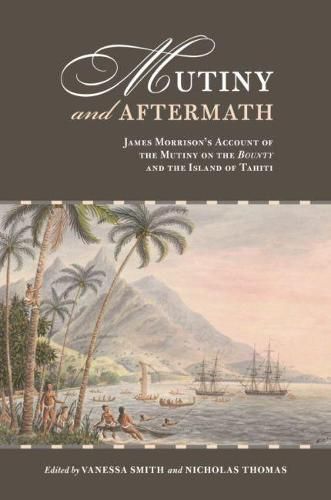Readings Newsletter
Become a Readings Member to make your shopping experience even easier.
Sign in or sign up for free!
You’re not far away from qualifying for FREE standard shipping within Australia
You’ve qualified for FREE standard shipping within Australia
The cart is loading…






This title is printed to order. This book may have been self-published. If so, we cannot guarantee the quality of the content. In the main most books will have gone through the editing process however some may not. We therefore suggest that you be aware of this before ordering this book. If in doubt check either the author or publisher’s details as we are unable to accept any returns unless they are faulty. Please contact us if you have any questions.
The mutiny on the Bounty was one of the most controversial events of eighteenth-century maritime history. This book publishes a full and absorbing narrative of the events by one of the participants, the boatswain’s mate James Morrison, who tells the story of the mounting tensions over the course of the voyage out to Tahiti, the fascinating encounter with Polynesian culture there, and the shocking drama of the event itself.
In the aftermath, Morrison was among those who tried to make a new life on Tahiti. In doing so, he gained a deeper understanding of Polynesian culture than any European who went on to write about the people of the island and their way of life before it was changed forever by Christianity and colonial contact. Morrison was not a professional scientist but a keen observer with a lively sympathy for Islanders. This is the most insightful and wide-ranging of early European accounts of Tahitian life.
Mutiny and Aftermath is the first scholarly edition of this classic of Pacific history and anthropology. It is based directly on a close study of Morrison’s original manuscript, one of the treasures of the Mitchell Library in Sydney, Australia. The editors assess and explain Morrison’s observations of Islander culture and social relations, both on Tubuai in the Austral Islands and on Tahiti itself. The book fully identifies the Tahitian people and places that Morrison refers to and makes this remarkable text accessible for the first time to all those interested in an extraordinary chapter of early Pacific history.
$9.00 standard shipping within Australia
FREE standard shipping within Australia for orders over $100.00
Express & International shipping calculated at checkout
This title is printed to order. This book may have been self-published. If so, we cannot guarantee the quality of the content. In the main most books will have gone through the editing process however some may not. We therefore suggest that you be aware of this before ordering this book. If in doubt check either the author or publisher’s details as we are unable to accept any returns unless they are faulty. Please contact us if you have any questions.
The mutiny on the Bounty was one of the most controversial events of eighteenth-century maritime history. This book publishes a full and absorbing narrative of the events by one of the participants, the boatswain’s mate James Morrison, who tells the story of the mounting tensions over the course of the voyage out to Tahiti, the fascinating encounter with Polynesian culture there, and the shocking drama of the event itself.
In the aftermath, Morrison was among those who tried to make a new life on Tahiti. In doing so, he gained a deeper understanding of Polynesian culture than any European who went on to write about the people of the island and their way of life before it was changed forever by Christianity and colonial contact. Morrison was not a professional scientist but a keen observer with a lively sympathy for Islanders. This is the most insightful and wide-ranging of early European accounts of Tahitian life.
Mutiny and Aftermath is the first scholarly edition of this classic of Pacific history and anthropology. It is based directly on a close study of Morrison’s original manuscript, one of the treasures of the Mitchell Library in Sydney, Australia. The editors assess and explain Morrison’s observations of Islander culture and social relations, both on Tubuai in the Austral Islands and on Tahiti itself. The book fully identifies the Tahitian people and places that Morrison refers to and makes this remarkable text accessible for the first time to all those interested in an extraordinary chapter of early Pacific history.